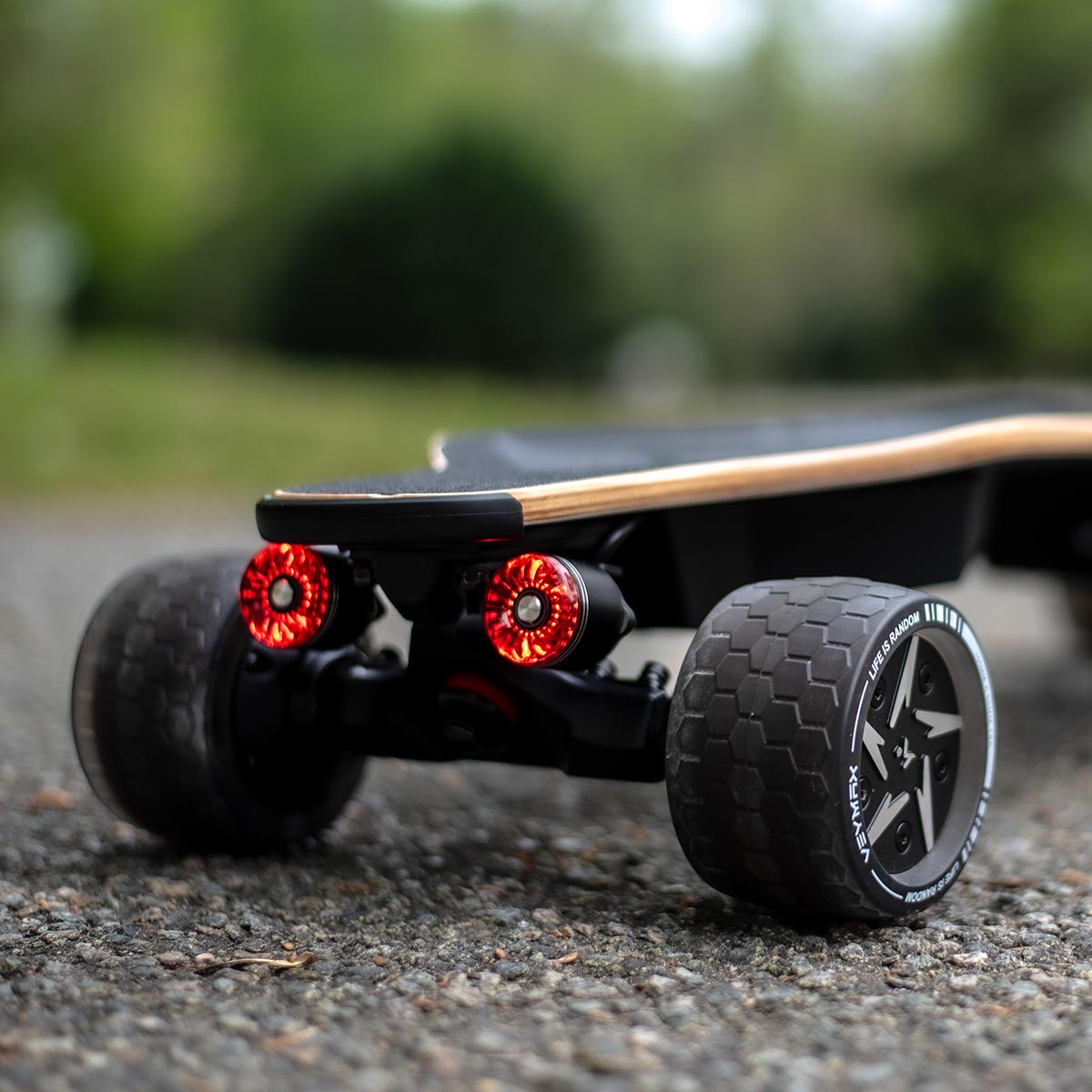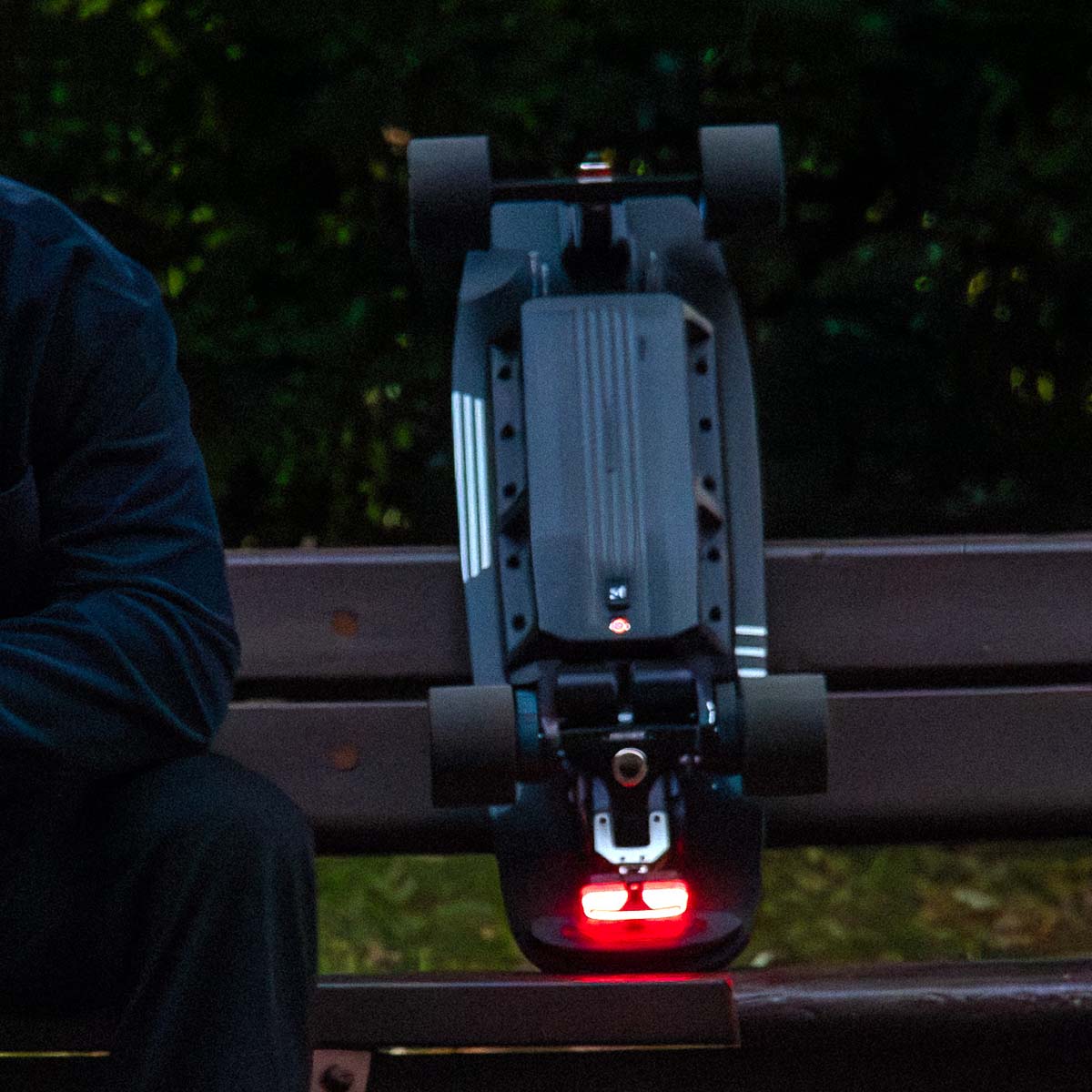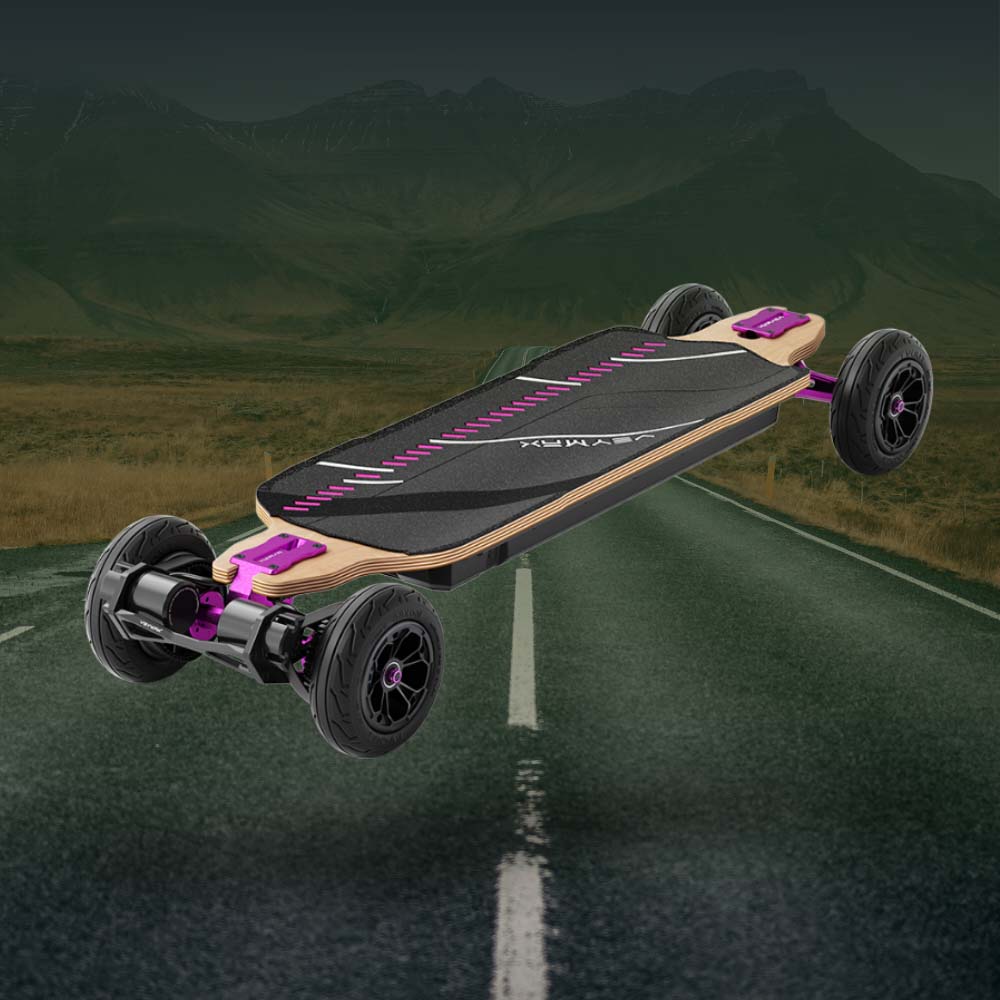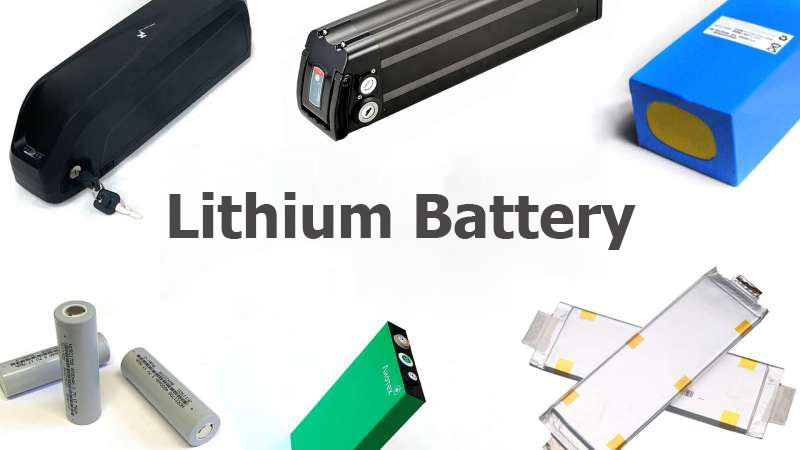Batteries are one of the key components that determine the performance and price of Veymax Skateboard and any other electric vehicle. When choosing a Skateboard hybrid model or Skateboard electrification kit, it's important to fully understand the technical aspects of the issue. The battery primarily determines the power reserve on a single charge and the maximum power delivered to the electric motor. In addition, an important parameter of the battery is the weight per unit capacity, battery life, charging time, operating temperature and safety.
Battery Specifications:
1. Capacity (Wh)
2. Power (W)
3. Weight (kg)
4. Service time (number of cycles)
5. Charging time (h, min)
Let's consider the meaning of each parameter in detail.
About capacity, voltage, mileage
The main parameter of any battery is the energy it stores, expressed in watt-hours. The quantity in Wh can be obtained by multiplying the rated voltage by the capacity in amp hours. For example: a battery with a voltage of 48 volts and a capacity of 10Ah has an energy reserve of 480W*h (48*10). In theory, this means the battery is capable of pumping out 480 watts for an hour. In practice, there are nuances, which I'll get to later.
Battery range is directly dependent on capacity. The second factor is speed. In real life, factors such as acceleration, wind force, terrain, and rider weight will all affect the cruising range, but in the calculation of parameters, it is customary to start from the average distance traveled at a certain speed. For 25 km/h, the consumption is 10 W*h/km, that is, the capacity is 480Wh, and the theoretical cruising range is 48 km. For a speed of 45 km/h the consumption will increase by a factor of 2, and for a speed of 60 km/h it will already be tripled, i.e. the higher the speed, the shorter the distance that can be traveled on a single charge.
Battery Power (Watts)
The output power of a battery is directly related to its capacity. The chemical type and quality of the cells from which the battery is assembled determines the multiple of the discharge current versus its capacity and is denoted by the letter C. The power that the battery can provide is multiplied by the battery capacity by C, and the C index has different values \u200b\u200b for continuous discharge current and short-term discharge current. Most Li-Ion batteries will deliver 0.5-1C on continuous discharge and 2-3C on peak load. For example, if you have a 480 Wh, 1-2C battery, it can provide 480 W of continuous power and 960 W of short-term power. There are high current batteries capable of delivering 3, 5 and even 10C. Also, the power is affected by the BMS installed in the battery. It limits the maximum power so as not to damage the battery and prolongs battery life.
weight and energy density. The type of cytochemistry.
The weight of the battery determines the energy density of the components that assemble the battery as well as the housing and BMS. Energy density is expressed as watt-hour capacity ratio per kilogram of battery weight (Wh/kg). This indicator depends on the chemical type and can vary greatly. You can see the values in the table.
Currently, Li-ion and Li-polymer batteries Li-ion, Li-NMC, Li-po are most widely used due to their high charge density - 160-240 Wh/kg and thus the light weight of the batteries themselves. They have operating temperature limits and strict safety regulations.
There are also Lithium Iron Phosphate (LiFePO4 ) batteries on the market, which offer a long life, wide operating temperature range and improved safety, but have a significantly lower energy density - 80-120 Wh/kg.
A rare lithium titanate LTO battery. They are characterized by extremely long life (25,000 -30,000 cycles), wide operating temperature range and high safety. They have very high charge and discharge current rates, but relatively low energy density - 60-100 Wh/kg.
Battery Life
The number of complete charge and discharge cycles determines the life of the battery. This depends on battery chemistry, quality and operating conditions. You can see the average number of lifetimes for different types of chemistries in the table. Specific battery parameters may vary by manufacturer and form factor. The most sensitive to operating conditions are lithium-ion batteries. To preserve their longevity, there are a few important rules:
1. It is strictly forbidden to charge the battery at negative temperature. Charging at temperatures below 10°C is not recommended.
2. Do not leave the battery empty. During normal use, it is recommended to charge the battery when the charge is below 50%.
3. For long-term storage, discharge the battery by 50% to ensure that the power is not lower than 20%.
4. Avoid peak loads at low and high temperatures. Most batteries work best between 10-40 °C.
5. If the battery is charged to 80%, the life may be longer than stated, but this requires special technical means.
Electric skateboard charging time
On the one hand, the battery charging time is limited by the cell parameters, which set the current limit for normal charging and fast charging. The latter reduces battery life. On the other hand, the time is directly determined by the power of the charger. Typically, batteries and devices come with cheap and low-power chargers. However, if you want to shorten the charging time and buy a more powerful charger, you need to check the cell parameters and BMS system of the assembled battery, which has its own limitation on the charging current.
Battery Cost for Electric Skateboards
1. Determining cost by capacity is the easiest way, expressed as cost per kWh. Generally speaking, lithium-ion batteries and lithium iron phosphate batteries currently cost about the same per watt-hour. Titanate elements are more expensive. At the same time, lithium-ion batteries will be significantly lighter, leading to their ubiquity.
2. If you recalculate the cost per mile for the entire life of the battery or the cost for one cycle, then the opposite is true. In this case, titanate would come first, then iron phosphate, and then lithium ions. However, you will have to pay for the increased weight and price of the battery.
3. The cost of the battery is also affected by the required output power. High current batteries will be more expensive than standard batteries of the same capacity. It needs better batteries and a BMS that can handle higher currents.
Battery savings are often associated with reduced capacity and the use of cheap batteries from lesser-known Chinese manufacturers. Naturally, they are of lower quality. It can also be second-rate, third-rate or well-known brand second-hand batteries.
What impact does this saving have in practice? Cheaper elements usually have lower properties, and high variation in element parameters. The Chinese like to measure the nominal capacity with a current of 0.2C, that is, low power. These components are fine for flashlights and power banks, but if you put their batteries on an e-Skateboard, this will cause a strong voltage drop under load. The actual capacity will be significantly reduced, the service life will be shortened, and overheating may occur. Due to the high distribution of the parameters of a parallel battery, some of them may wear out and fail faster than others. This causes the entire parallel to fail, and in some cases short circuits and fires. If you have decided to save money, choose a refractory chemical (Lithium Iron Phosphate).
Lithium battery safety
Surely you've heard of fires caused by lithium batteries. What can be done to avoid this? The obvious way is to use a fire-resistant chemical: iron phosphate or titanate. But what if the weight/capacity is not right, or you just want to buy an off-the-shelf device that only holds Li-Ion batteries? I can suggest one thing: don't save and choose a reputable manufacturer. We pay special attention to batteries. Through years of development, we have established a battery supply of the required quality. Electric bicycle batteries are assembled with a safe architecture: high-capacity EV batteries are only assembled in series, and multiple batteries are not used in parallel. This eliminates the possibility of a fire due to an internal short circuit in one of the batteries.






Leave a comment
This site is protected by hCaptcha and the hCaptcha Privacy Policy and Terms of Service apply.